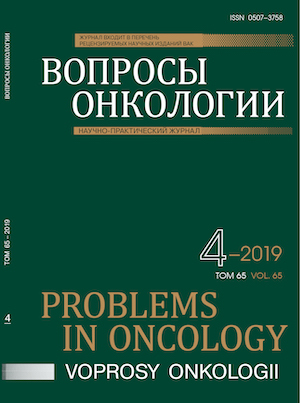Аннотация
Deep inferior epigastric perforator (DIEP)-лоскутная реконструкция является одним из вариантов восстановления молочной железы, достигающим наиболее приемлемый эстетический результат. Однако, тщательная предоперационная оценка индивидуальной сосудистой анатомии глубокой нижней эпигастральной артерии (ГНЭА), необходимая для выполнения этой операции, является трудной задачей. При помощи методов лучевой диагностики должны быть визуализированы такие важные индивидуальные анатомические особенности, как внутримышечный ход и извитость ГНЭА, а также её ветвей, что является базисом для уменьшения операционного времени, длительности ишемии лоскута, частоты осложнений. В качестве основного метода лучевой диагностики для планирования этой операции предлагается использовать компьютерную томографию (КТ) с внутривенным контрастированием. Целью данной статьи является демонстрация подхода планирования DIEP-лоскутной реконструкции молочной железы на основе картирования ГНЭА по данным КТ-ангиографии.
Библиографические ссылки
Bray F., Ferlay J., Soerjomataram I. et al. Global cancer statistics 2018: GLoBoCAN estimates of incidence and mortality worldwide for 36 cancers in 185 countries. CA: a cancer journal for clinicians. 2018. 68: 394-424.
Howlader N., Noone A.M., Krapcho M. et al. sEER Cancer statistics Review, 1975-2014, national Cancer Institute. Bethesda, MD, based on November 2016 sEER data submission, posted to the sEER web site, April 2017.
national Comprehensive Cancer network (NCCN). Practice Guidelines in oncology: Breast Cancer. Version 2.2017.
Arroyo J. M. G., Lpez M. L. Psychological problems derived from mastectomy: a qualitative study. International journal of surgical oncology. 2011. 2011: 132461.
Yang R. L., Kelz R. R., Czerniecki B. J. Immediate reconstruction following nipple-sparing mastectomy: one option for young breast cancer patients with early stage disease. Journal of thoracic disease. 2013. 3: 200.
Chen W., Lv X., Xu X. et al. Meta-analysis for psychological impact of breast reconstruction in patients with Breast Cancer. Breast Cancer. 2018. 4: 464-469.
Qin Q., Tan Q., Lian B. et al. Postoperative outcomes of breast reconstruction after mastectomy: A retrospective study. Medicine. 2018. 5: 9766.
Pirro O., Mestak O., Vindigni V. et al. Comparison of patient-reported outcomes after implant versus autologous tissue breast reconstruction using the BREAST-Q. Plastic and Reconstructive Surgery Global Open. 2017. 1: 1217.
Pollhammer M.S., Duscher D., Schmidt M. et al. Recent advances in microvascular autologous breast reconstruction after ablative tumor surgery. World journal of clinical oncology. 2016. 7: 114.
Zhong T., McCarthy C., Min S. et al. Patient satisfaction and health related quality of life after autologous tissue breast reconstruction: A prospective analysis of early postoperative outcomes. Cancer. 2012. 118: 1701-1709.
Matros E., Albornoz C.R., Razdan S.N. et al. Cost-effectiveness analysis of implants versus autologous perforator flaps using the BREAST-Q //Plastic and reconstructive surgery. 2015. 135: 937-946.
Molina A.R., Jones M.E., Hazari A. et al. Correlating the deep inferior epigastric artery branching pattern with type of abdominal free flap performed in a series of 145 breast reconstruction patients. The Annals of The Royal College of Surgeons of England. 2012. 94: 493-495.
Kim H., Lim S.Y, Pyon J.K. et al. Preoperative computed tomographic angiography of both donor and recipient sites for microsurgical breast reconstruction. Plastic and reconstructive surgery. 2012. 130: 11-20.
Tong W.M., Dixon R., Ekis H. et al. The impact of preoperative CT angiography on breast reconstruction with abdominal perforator flaps. Annals of plastic surgery. 2012. 68: 525-530.
Anstett P. Breast Cancer Surgery and Reconstruction: What's Right For You. - Rowman
Karunanithy N., Rose V., Lim A.K. et al. CT angiography of inferior epigastric and gluteal perforating arteries before free flap breast reconstruction. Radiographics. 2011. 31: 1307-1319.
Greenspun D., Vasile J., Levine J. et al. Anatomic imaging of abdominal perforator flaps without ionizing radiation: seeing is believing with magnetic resonance imaging angiography. Journal of reconstructive microsurgery. 2010. 26: 37-44.

Это произведение доступно по лицензии Creative Commons «Attribution-NonCommercial-NoDerivatives» («Атрибуция — Некоммерческое использование — Без производных произведений») 4.0 Всемирная.
© АННМО «Вопросы онкологии», Copyright (c) 2019
